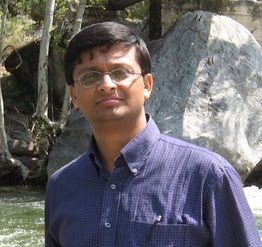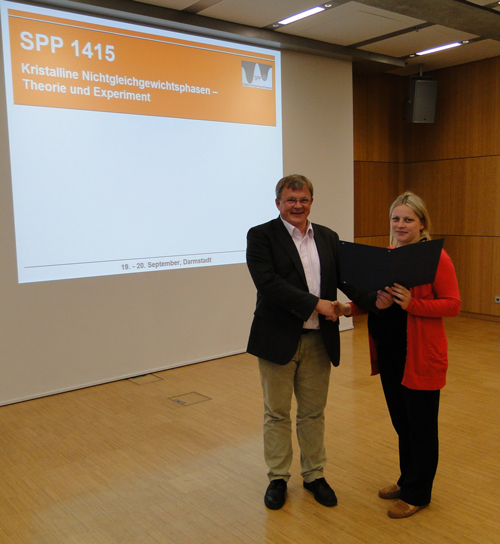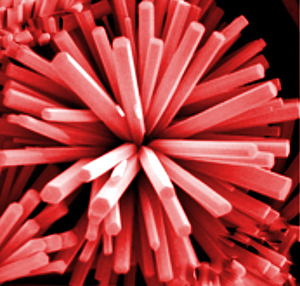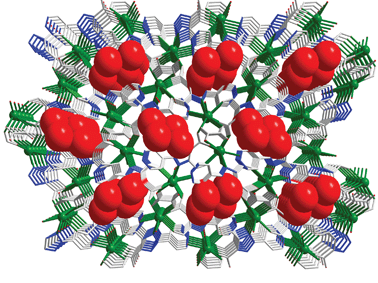This month sees the following articles in CrystEngComm that are in the top ten most accessed:-
Synthesis and characterization of a zinc metal–organic framework with chiral nano-pores
Lingjuan Shen , Danielle Gray , Richard I. Masel and Gregory S. Girolami
CrystEngComm, 2012,14, 5145-5147 DOI: 10.1039/C2CE25780G
A 6-fold interpenetrated ThSi2 topological metal–organic framework from a nanosized tripodal aromatic acid
Chunhua Ma , Yong Wu , Jun Zhang , Yan Xu , Beibei Tu , Yaoming Zhou , Min Fang and Hong-Ke Liu
CrystEngComm, 2012,14, 5166-5169 DOI: 10.1039/C2CE25422K
Ionic liquids as crystallisation media for inorganic materials
Ejaz Ahmed , Joachim Breternitz , Matthias Friedrich Groh and Michael Ruck
CrystEngComm, 2012,14, 4874-4885 DOI: 10.1039/C2CE25166C
Stepwise pillar insertion into metal–organic frameworks: a sequential self-assembly approach
Brandon J. Burnett and Wonyoung Choe
CrystEngComm, 2012,14, 6129-6131 DOI: 10.1039/C2CE25545F
Remarkable solvent-size effects in constructing novel porous 1,3,5-benzenetricarboxylate metal–organic frameworks
Xiang-Rong Hao , Xin-Long Wang , Kui-Zhan Shao , Guang-Sheng Yang , Zhong-Min Su and Gang Yuan
CrystEngComm, 2012,14, 5596-5603 DOI: 10.1039/C2CE25343G
Porosity in metal–organic frameworks following thermolytic postsynthetic deprotection: gas sorption, dye uptake and covalent derivatisation
Anushree Sen Gupta , Rajesh K. Deshpande , Lujia Liu , Geoffrey I. N. Waterhouse and Shane G. Telfer
CrystEngComm, 2012,14, 5701-5704 DOI: 10.1039/C2CE25854D
Two solvent-dependent zinc(ii) supramolecular isomers: structure analysis, reversible and nonreversible crystal-to-crystal transformation, highly selective CO2 gas adsorption, and photoluminescence behaviors
Bo Liu , Ling-Yan Pang , Lei Hou , Yao-Yu Wang , Yue Zhang and Qi-Zhen Shi
CrystEngComm, 2012,14, 6246-6251 DOI: 10.1039/C2CE26058A
Coordination polymers, metal–organic frameworks and the need for terminology guidelines
Stuart R. Batten , Neil R. Champness , Xiao-Ming Chen , Javier Garcia-Martinez , Susumu Kitagawa , Lars Öhrström , Michael O’Keeffe , Myunghyun Paik Suh and Jan Reedijk
CrystEngComm, 2012,14, 3001-3004 DOI: 10.1039/C2CE06488J
Synthesis of phase-pure SnO2 nanosheets with different organized structures and their lithium storage properties
Jun Song Chen , Mei Feng Ng , Hao Bin Wu , Lei Zhang and Xiong Wen (David) Lou
CrystEngComm, 2012,14, 5133-5136 DOI: 10.1039/C2CE25349F
Metal–organic frameworks built from achiral cyclohex-1-ene-1,2-dicarboxylate: syntheses, structures and photoluminescence properties
Yun Gong , Tao Wu , Jianhua Lin and Baoshan Wang
CrystEngComm, 2012,14, 5649-5656 DOI: 10.1039/C2CE06415D
Why not take a look at the articles today and blog your thoughts and comments below.
Fancy submitting an article to CrystEngComm? Then why not submit to us today or alternatively email us your suggestions.
Comments Off on Top ten most accessed articles in July
 Articles are chosen from:
Articles are chosen from:
















